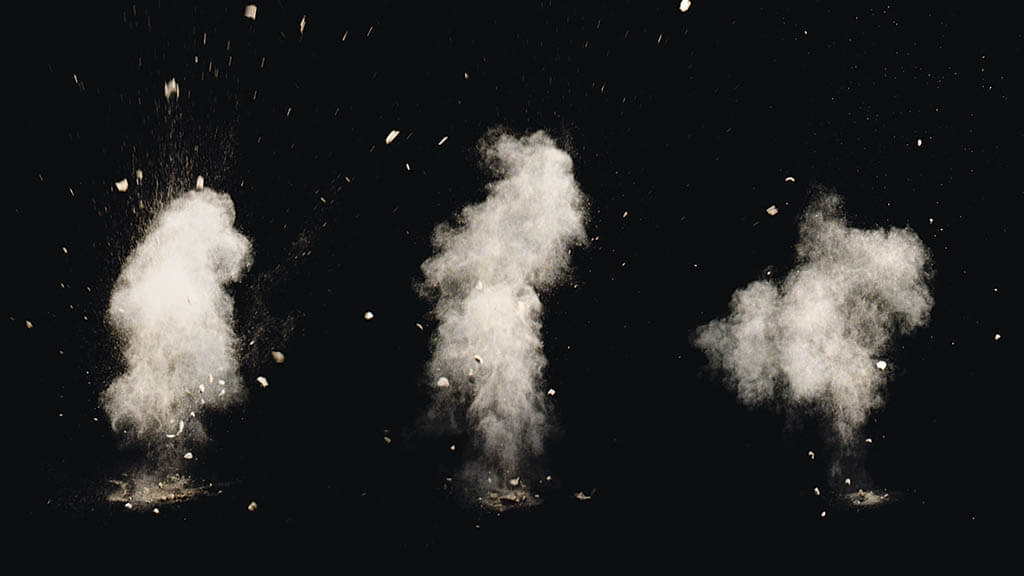Community, Leadership, Experimentation, Diversity, & Education
Pittsburgh Arts, Regional Theatre, New Work, Producing, Copyright, Labor Unions,
New Products, Coping Skills, J-O-Bs...
Theatre industry news, University & School of Drama Announcements, plus occasional course support for
Carnegie Mellon School of Drama Faculty, Staff, Students, and Alumni.
CMU School of Drama
Thursday, April 07, 2022
THE SECRETS BEHIND STOCK EFFECTS ELEMENTS
VFX Voice Magazine: These days, whenever we see a raging fire, or a plume of smoke, or a muzzle flash on the screen, there’s a high chance this has been added to the scene with visual effects. And, of course, it might be something added to the shot care of a particular stock effects element.
Subscribe to:
Post Comments (Atom)

5 comments:
To me, the most impressive effect described in this article is the giant tarantula in Enemy. To make a small animal look as if it is a giant creature taking up a large portion of the wall takes a lot of skill and creativity. I would have never thought about the casting process for a tarantula with the right look. I also appreciate that they note what happened to the tarantula after filming, so we are not left wondering if it was abandoned. It was also fascinating to understand how large explosion effects are executed, especially the use of a sniper to set off the explosive. With all the recent news about incidents of gunfire going wrong on sets, I am surprised I have never heard of an explosion going wrong during filming of an effect or film. Taylor’s mention of the necessity of speed in this type of work was also good to know, that this is a skill that requires quick thinking.
I had no idea VFX was such a complicated process! I actually booted up Adobe After Effects to check out a few things after reading this. What I think I'm the most fascinated by is around the end of the article, they talk about how the VFX artists typically do the actual filming of the effect themselves, because the way they shoot it informs the rest of the process. I think that attention not only to detail, but the work that comes afterwards, is rather skillful, and heavily informed by experience. It's really cool.
As for the stock effect thing, I can't talk much about the VFX side of things, but it's kinda like how in sound we have reasons for using foley (recorded) vs stock. With the timeframes I usually have, I only do foley when I need something really specific. Stock usually works just fine for me on everything else, as there is such a huge amount of stock sounds either free or for sale that you can find the right sound and tune it to what you need pretty easily. Honestly, it's a question of time, money, and level of authenticity.
This article was a really fun read. Reading about some of the special effects for movies that I have seen was really interesting. For example I had no idea the amount of effort that went into the water effects in the movie Pacific Rim. Now knowing some of the ways that they went about filming those effects I will definitely be watching the movie with a different light. I know that movie in particular was very specific with the sets and effects throughout the movie, and getting a little inside look at the tiny detail of the rain that they paid so much attention to in really interesting. Also, the perspective of finding a practical example whenever possible is really cool. The use of practical references in the VFX work is something that I really appreciate, because it is something that I assume would lend some more honesty and realism to the effects.
Something I find really interesting about a lot of video effects used in movies is how differently it is done from theatre. A lot of tricks can be on by getting something close up or far away, filming it with something, perhaps spray, perhaps something else and using very specific cameras or camera angles to make them look widely different, but the key part of that is that movies and tv have that separate space or that separate time where they are able to do it vs. us where we are live and in front of an audience, not just a camera and so our effects and the ones put into our shows need to be in a way a lot more realistic leading to differences in technique and how we approach problems, though simplicity is always important and always part of that conversation as we set up the special projects.
I have never really thought about the particular subject of the secrets behind stock affect elements but I was so intrigued to see everything the article had to teach me about the specific genre of special effects. I find it so cool that visual effects studio libraries can now be purchased as pre-filmed and pre canned elements from various producers. Rodeo Fx is a particularly cool company which has retained a 4,000 square-foot stage in which element shoots can take place. It’s so cool to think that peoples jobs are to recreate and film all of these special effects for digital use in a later date. It was also so interesting to learn that the work of the special effects designers is so integral to the directors visions and really influences the composition and plating for shots in the film. Fro smoke to fire and explosions to tsunamis, these special effects are used for all types of live action uses.
Post a Comment